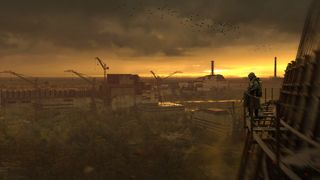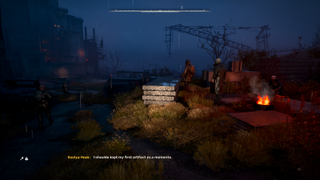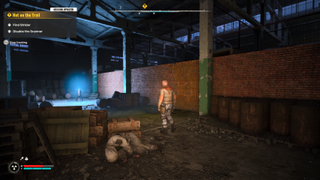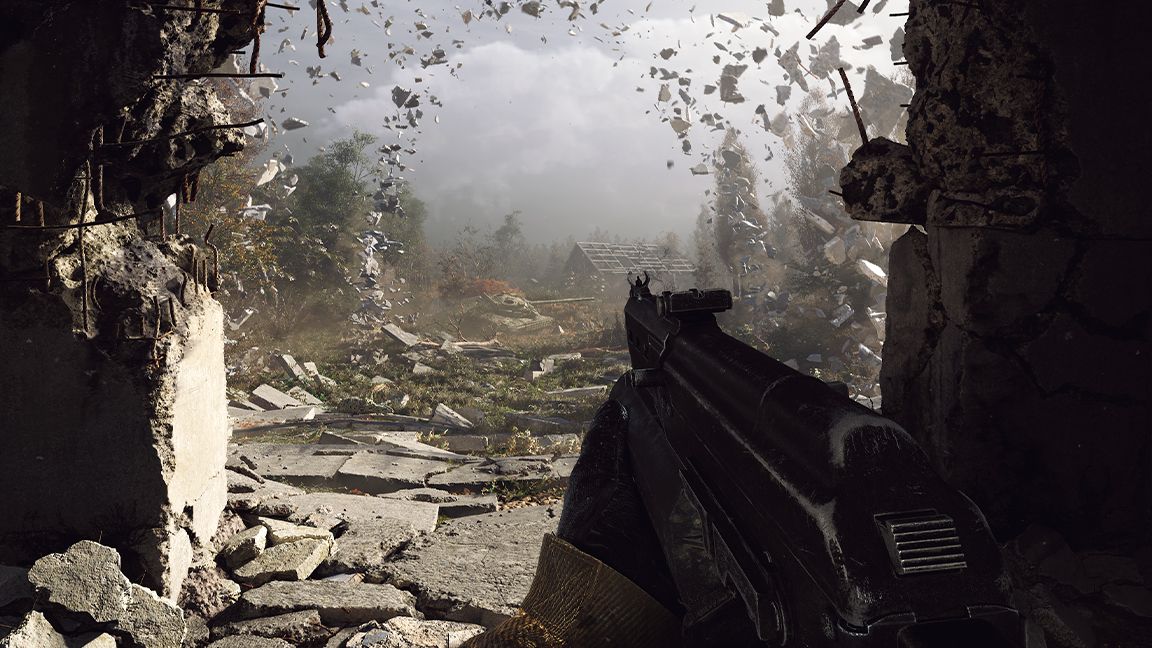Publisher GSC Game World / Microsoft
Developer GSC Game World
Format PC, Xbox Series X/S (reviewed)
Platform Unreal Engine 5
Release date Out now
I would argue that Stalker 2: Heart of Chornobyl is more than a mere video game: it’s a full-blown cultural artefact. That’s certainly true for anyone who comes from developer GSC Game World’s homeland of Ukraine. 2007’s original Stalker game, a survival-shooter set in the Exclusion Zone around the Chornobyl nuclear reactor, became a touchstone of Ukrainian culture as the country forged an independent identity when the USSR collapsed shortly after the Chornobyl disaster.
So to say that Stalker 2 – the full sequel to Stalker – has been long-awaited would be an understatement. It would no doubt have launched long ago if GSC Game World hadn’t been beset by the sort of adversity that no developer should have to bear.
After Ukraine was invaded by Russia in 2022, most of GSC Game World was forced to leave the country, ending up in Prague. But a significant chunk of the team remains in Kyiv – many of whom have been involved in defending Ukraine, and some of whom have been lost to the conflict. The company’s Prague office has been constantly subjected to Russian hacking attacks. Stalker 2 won’t be sold in Russia, and Chornobyl, pointedly, is the Ukrainian spelling.
Stalker 2 is offers proper survival-shooting

Having visited GSC Game World’s Prague office a month or so ago, I can testify to the company’s laser-focused determination and resolve to make a game that more than does justice to Stalker’s considerable legacy, and it’s hugely satisfying to report that Stalker 2 does just that.
This game (I’m reviewing on Xbox Series X) is very much a modern-technology sequel to the original game: although a first-person shooter, it casts players as Skif, an ordinary guy who becomes a Stalker – a drifter aiming to survive and make his name in the Chornobyl Exclusion Zone. Although Skif acquires more sophisticated armour and weaponry as he traverses the game, he never acquires any superhuman attributes. Stalker 2 is an unforgiving game that requires frequent saves and a self-preservation-heavy approach.
Also like the first game, it has a fantasy element: in Stalker 2’s depiction, the Chornobyl Exclusion Zone is full of anomalies, which might electrocute Skif, irradiate him, burn him, blow him around or even suck him into the air and rip his insides out. It teems with mutant wildlife and humanoids which, for example, might be near-invisible until they get up close and rake Skif with their claws.
Then there are the human factions, including the Ward, essentially a military police force; Freedom, who are a sort of heavily armed band of merchants; Duty, who try to keep the mutant threat at bay; Noon, a quasi-religious sect; and Bandits, who are just out to steal, cheat and rob. I’ve already had dealings with most, often leading to mutually hostile relationships.
Stalker 2’s distinctive use of Unreal Engine 5

Stalker 2 was built in Unreal Engine 5, whereas the original game used GSC Game World’s proprietary X-Ray engine. Undoubtedly, using such a popular engine helped them to get the game out in the face of such diversity. Aesthetically speaking, Stalker 2’s use of Unreal Engine 5 is, shall we say, interesting.
Since the game is set in the Chornobyl Exclusion Zone, it adopts a fascinatingly grim look. The colour palette is easy to describe: rust and concrete. You never encounter any interior in which the paint, if there is any, isn’t peeling off the walls. The vegetation is impressively realistic, and looks as if it has suffered a low level of radiation for 30-odd years. The weather is usually filthy, and frequently punctuated by so-called emissions – violent electrical storms that turn the sky red and will instantly kill Skif if he isn’t in a building that has a proper roof. Such buildings are pretty rare in the Zone.
Stalker 2’s environmental design may be bleak, but it’s fantastic and, even with the anomalies, some of which bring a bit of colour via fire, electrical sparks and green radioactive fog to proceedings, is strangely believable. The Zone itself can be classified as a character in its own right: it’s ram-packed with diversions, hidden stashes and random occurrences, along with a diverse and vibrant array of human characters.
Each new area you enter (Stalker 2 is fully open-world and there’s no way of teleporting or even driving around it) demands to be explored, and environmental puzzles (often involving crawling through sewers or caves) abound. Although it’s a story-heavy game, it often lets you take choices about how to advance the main story arc, so it never feels too linear, and it contains such a vast amount of side-missions and general diversions that I ended up feeling as though I was making my own story in it.
Exemplary survival combat

As in the original game, Stalker 2’s first-person shooting is exemplary. At first, Skif – after a short but handy tutorial – is left with just a handgun and no equipment, but his early missions bring some more useful weaponry, although ammo for that is enormously scarce. It really is a survival game, poles apart from more military-inclined shooters. Eventually, as Skif moves deeper into the Zone, in pursuit of Solder, who he perceives as betraying him, and the scanner with which he was entrusted in the tutorial (which plays a central part in the story), he amasses a vast array of shotguns, snipers and automatic weapons of all conceivable types.
Lack of ammo becomes less of a problem, but the fire-fights become vastly more intense. And it pays to find artefacts which offer protection from the various types of anomaly. While Skif doesn’t evolve, the gameplay does, in a satisfying manner.
All the while, the Zone becomes an ever more immersive environment. Stalker 2 makes great use of sound, both to warn you of incoming attacks and to pile on the atmospheric dread. While it wouldn’t call itself a horror game, it nevertheless throws up a steady stream of genuinely chilling moments. Its game-world may be relentlessly bleak, but it’s so rich and characterful that it’s a constantly compelling place to return to.

Unsurprisingly, given the difficulties that GSC Game World experienced when making it, it isn’t perfect. It has one of the biggest ever game-worlds, and a number of systems (weather, random packs of dogs and rats, patrolling factions and the like) layered on top of each other, so it’s never going to be as polished as a scripted single-path game.
Sure, I encountered the odd visual glitch, and enemy AI, in particular, could be unpredictable – sometimes coming at you with a vengeance, at other times strangely passive. But crash-bugs, as experienced a few months ago in a preview session, appear to have been eliminated, and a general air of unpredictability is very much in keeping with Stalker 2’s general vibe.
The dialogue is also patchy – sometimes a bit ropey, but at other times life-affirming. Among the chaos, I often found myself engaging in philosophical discussions with random characters around campfires. And that, in a way, sums up Stalker 2: it’s a game that constructs a glorious playground, in which you can always find entertainment that suits your mood. It’s bleak, but never forbidding. And if you buy a copy of it, that will constitute an effective means of registering a protest against Russia’s invasion of Ukraine.
